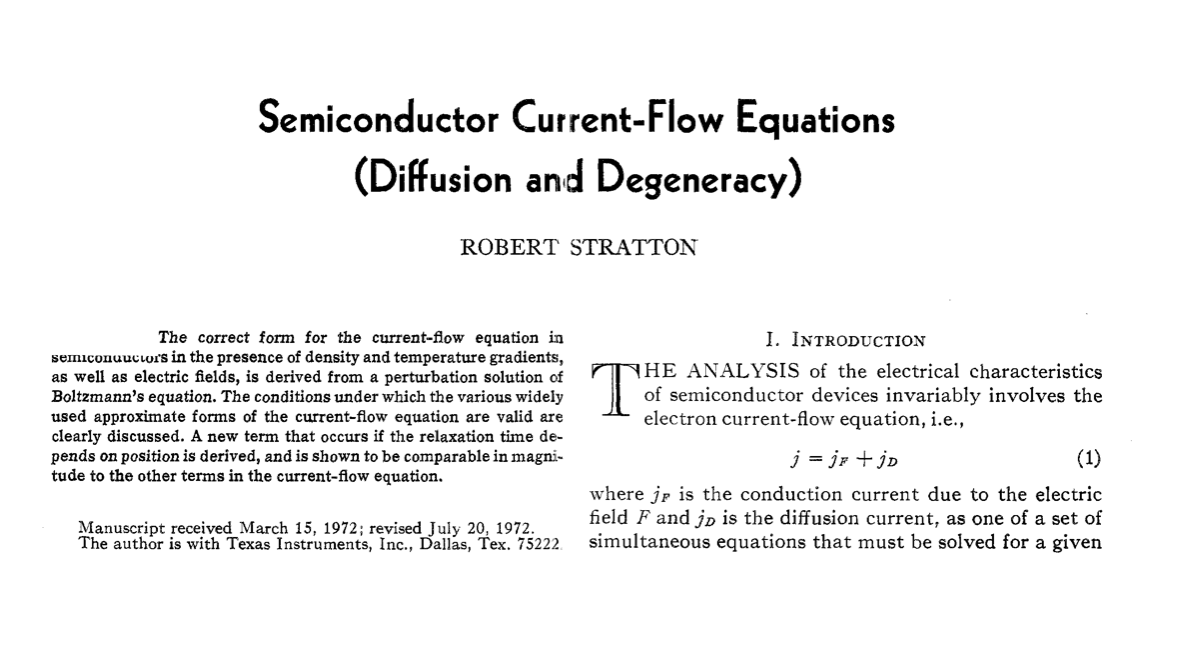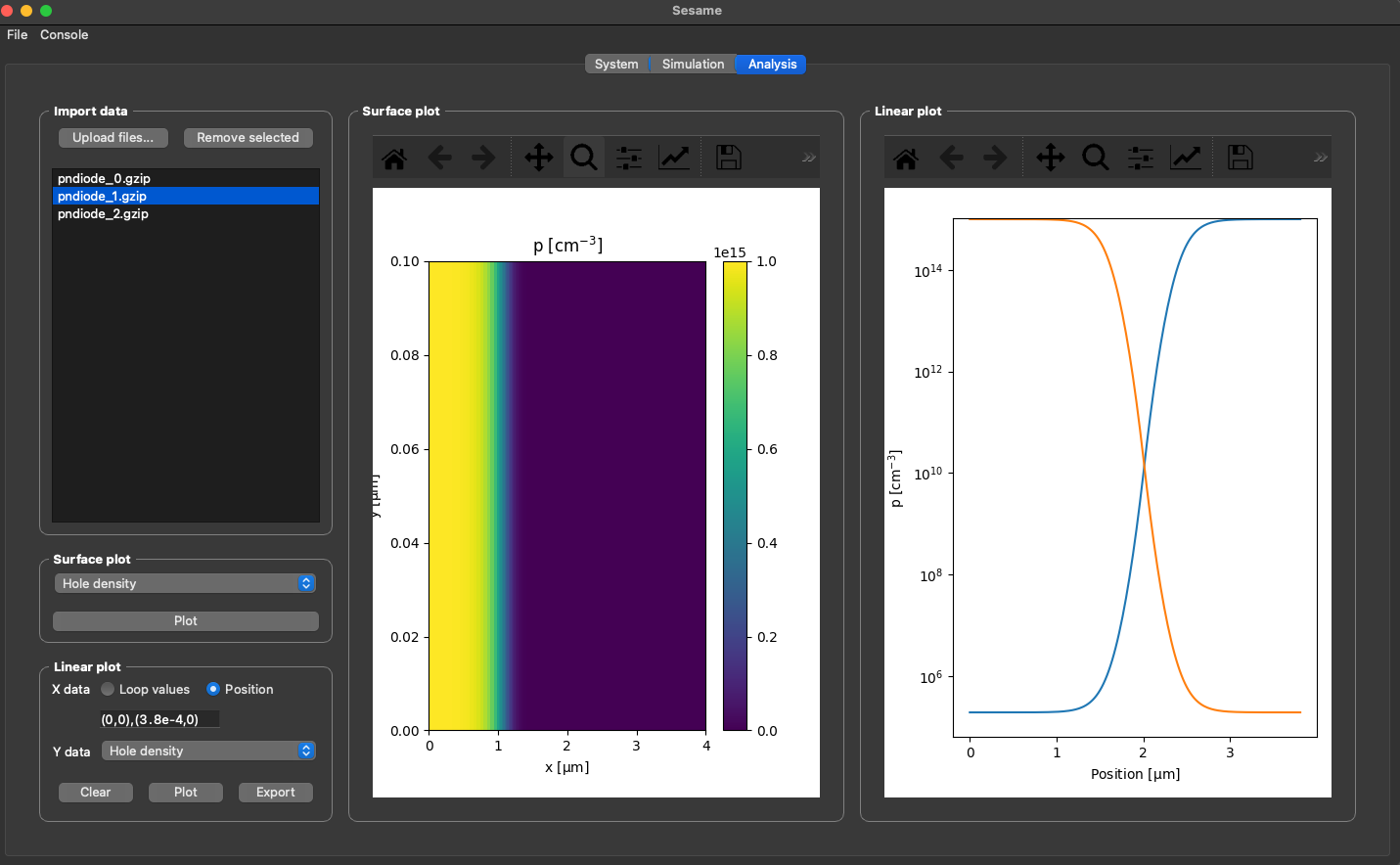l13_logic
- TFE4152 - Lecture 13
- CMOS Logic
- Goal for today
- CMOS static logic assumptions
- Don’t break rules unless you know exactly why it will be OK
- Memnonic
- \(SR\)-Latch
- \(SR\)-Latch
- D-Latch (16 transistors)
- Digital can be synthesized in conductive peanut butter Barrie Gilbert?
- What about \(\text{Y} = \text{AB}\) and \(\text{Y} = \text{A} + \text{B}\)?
- \(\text{Y} = \text{AB} = \overline{\overline{\text{AB}}}\)
- \(\text{Y} = \text{A+B} = \overline{\overline{\text{A+B}}}\)
- AOI22: and or invert
- Tristate inverter
- Mux
- There are other types of logic
TFE4152 - Lecture 13
CMOS Logic
Source
| Week | Book | Monday | Book | Friday |
|---|---|---|---|---|
| 34 | Introduction, what are we going to do in this course. Why do you need it? | WH 1 , WH 15 | Manufacturing of integrated circuits | |
| 35 | CJM 1.1 | pn Junctions | CJM 1.2 WH 1.3, 2.1-2.4 | Mosfet transistors |
| 36 | CJM 1.2 WH 1.3, 2.1-2.4 | Mosfet transistors | CJM 1.3 - 1.6 | Modeling and passive devices |
| 37 | Guest Lecture - Sony | CJM 3.1, 3.5, 3.6 | Current mirrors | |
| 38 | CJM 3.2, 3.3,3.4 3.7 | Amplifiers | CJM, CJM 2 WH 1.5 | SPICE simulation |
| 39 | Verilog | Verilog | ||
| 40 | WH 1.4 WH 2.5 | CMOS Logic | WH 3 | Speed |
| 41 | WH 4 | Power | WH 5 | Wires |
| 42 | WH 6 | Scaling Reliability and Variability | WH 8 | Gates |
| 43 | WH 9 | Sequencing | WH 10 | Datapaths - Adders |
| 44 | WH 10 | Datapaths - Multipliers, Counters | WH 11 | Memories |
| 45 | WH 12 | Packaging | WH 14 | Test |
| 46 | Guest lecture - Nordic Semiconductor | |||
| 47 | CJM | Recap of CJM | WH | Recap of WH |
Goal for today
Analog transistor to digital transistor
Fundamental static logic cells
Other static logic cells
Project Questions
(If time: Sesame Demo)
Analog transistor to digital transistor
NMOS current (W = 0.4u L=0.15u) as a function of \(V_{GS}\) and \(V_{DS}\)
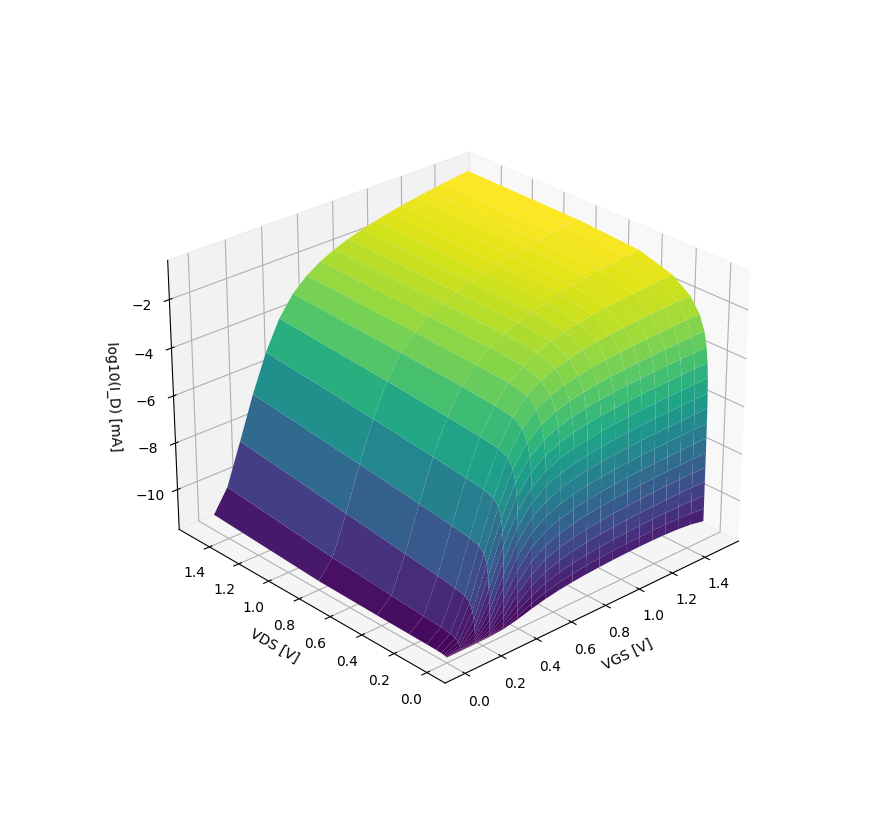

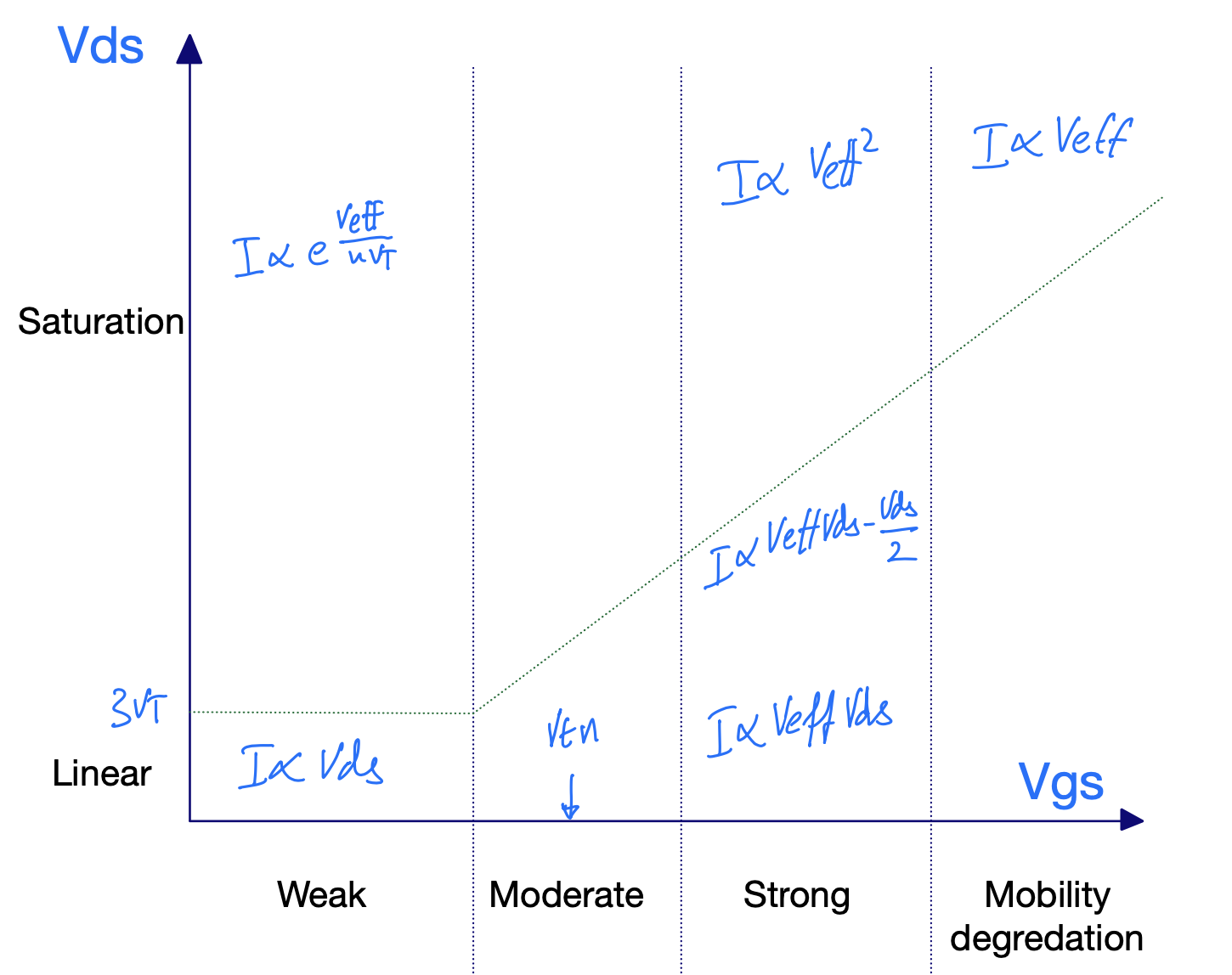

| Gate | NMOS | PMOS |
|---|---|---|
| VDD | ON | OFF |
| VDD -> VSS | X | X |
| VSS -> VDD | X | X |
| VSS | OFF | ON |
| Gate | NMOS | PMOS |
|---|---|---|
| 1 | ON | OFF |
| 1 -> 0 | X | X |
| 0 -> 1 | X | X |
| 0 | OFF | ON |
CMOS static logic assumptions
NMOS source is connected to low potential
\(V_{GS} > V_{TH}\) when \(V_G = V_{DD}\)
PMOS source is connected to high potential
\(V_{GS} < V_{TH}\) when \(V_G = 0\)
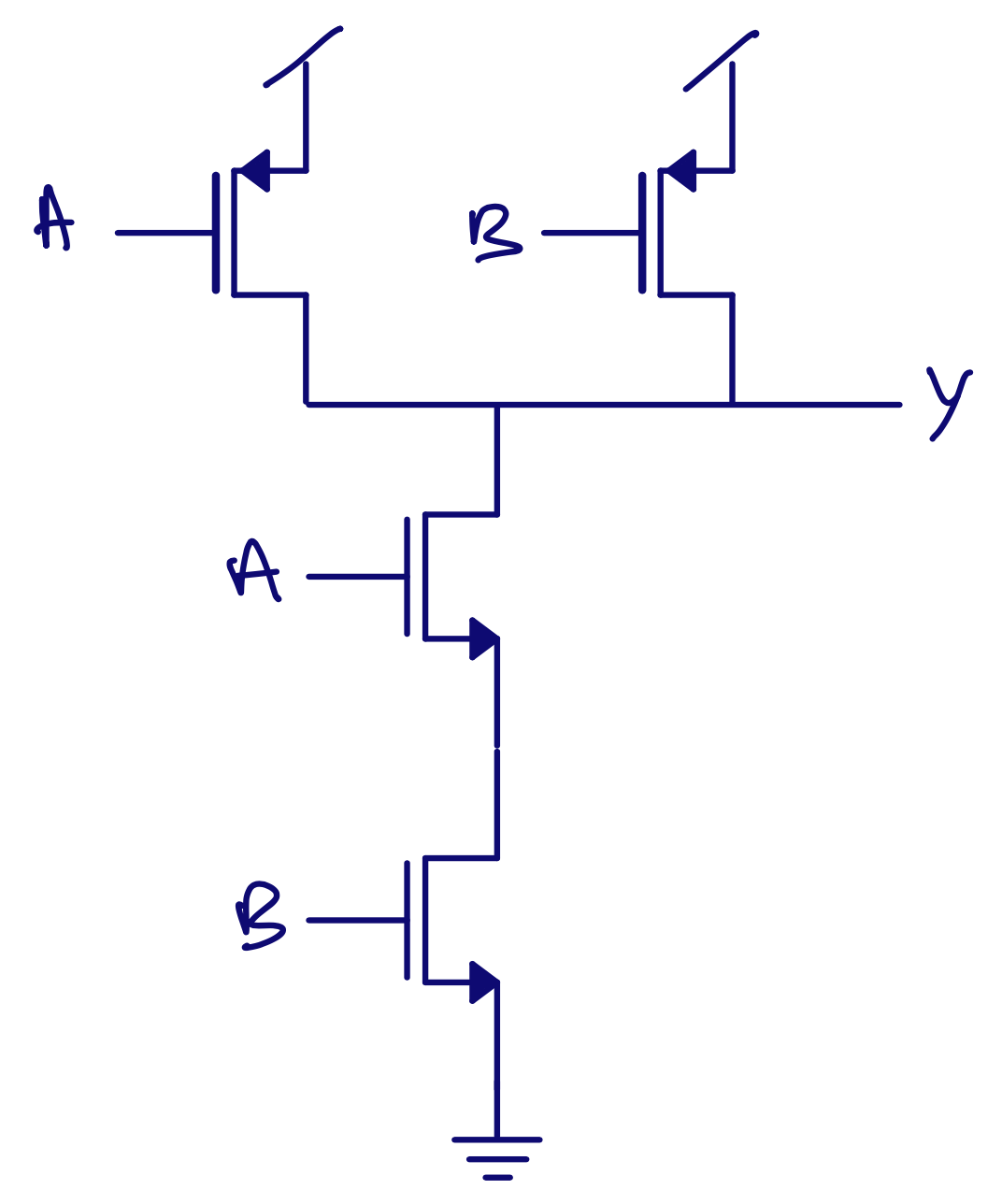
Don’t break rules unless you know exactly why it will be OK
Logic cells
CMOS static logic is inverting
| A | Y |
|---|---|
| 1 | 0 |
| 0 | 1 |

PD = Pull-down PU = Pull-up
logic => [0,1,Z,X];

[.table-separator: #000000, stroke-width(1)] [.table: margin(8)]
Pull-up series
| A | B | Y |
|---|---|---|
| 0 | 0 | 1 |
| 0 | 1 | Z |
| 1 | 0 | Z |
| 1 | 1 | Z |
Pull-up paralell
| A | B | Y |
|---|---|---|
| 0 | 0 | 1 |
| 0 | 1 | 1 |
| 1 | 0 | 1 |
| 1 | 1 | Z |
[.table-separator: #000000, stroke-width(1)] [.table: margin(8)]
Pull-down series
| A | B | Y |
|---|---|---|
| 0 | 0 | Z |
| 0 | 1 | Z |
| 1 | 0 | Z |
| 1 | 1 | 0 |
Pull-down paralell
| A | B | Y |
|---|---|---|
| 0 | 0 | Z |
| 0 | 1 | 0 |
| 1 | 0 | 0 |
| 1 | 1 | 0 |
Rules for inverting logic
Pull-up OR \(\Rightarrow\) PMOS in series \(\Rightarrow\) POS AND \(\Rightarrow\) PMOS in paralell \(\Rightarrow\) PAP
Pull-down OR \(\Rightarrow\) NMOS in paralell \(\Rightarrow\) NOP AND \(\Rightarrow\) NMOS in series \(\Rightarrow\) NAS

Memnonic
Crazier the better
POS, PAP, NOP, NAS
A Postraumatic Papaya was walking on the Moon. Nope, it was a NASA astronaut.
image ../ip/moonwalking.jpg removed Moonwalking with Einstein
[.table-separator: #000000, stroke-width(1)] [.table: margin(8)]
\(\text{Y} = \overline{\text{AB}} = \text{NOT ( A AND B)}\)
AND PU \(\Rightarrow\) PMOS in paralell PD \(\Rightarrow\) NMOS in series

A Postraumatic Papaya was walking on the Moon. Nope, it was a NASA astronaut.
| A | B | NOT(A AND B) |
|---|---|---|
| 0 | 0 | 1 |
| 0 | 1 | 1 |
| 1 | 0 | 1 |
| 1 | 1 | 0 |


[.table-separator: #000000, stroke-width(1)] [.table: margin(8)]
\(\text{Y} = \overline{\text{A + B}} = \text{NOT ( A OR B)}\)
OR PU \(\Rightarrow\) PMOS in series PD \(\Rightarrow\) NMOS in paralell
A Postraumatic Papaya was walking on the Moon. Nope, it was a NASA astronaut.
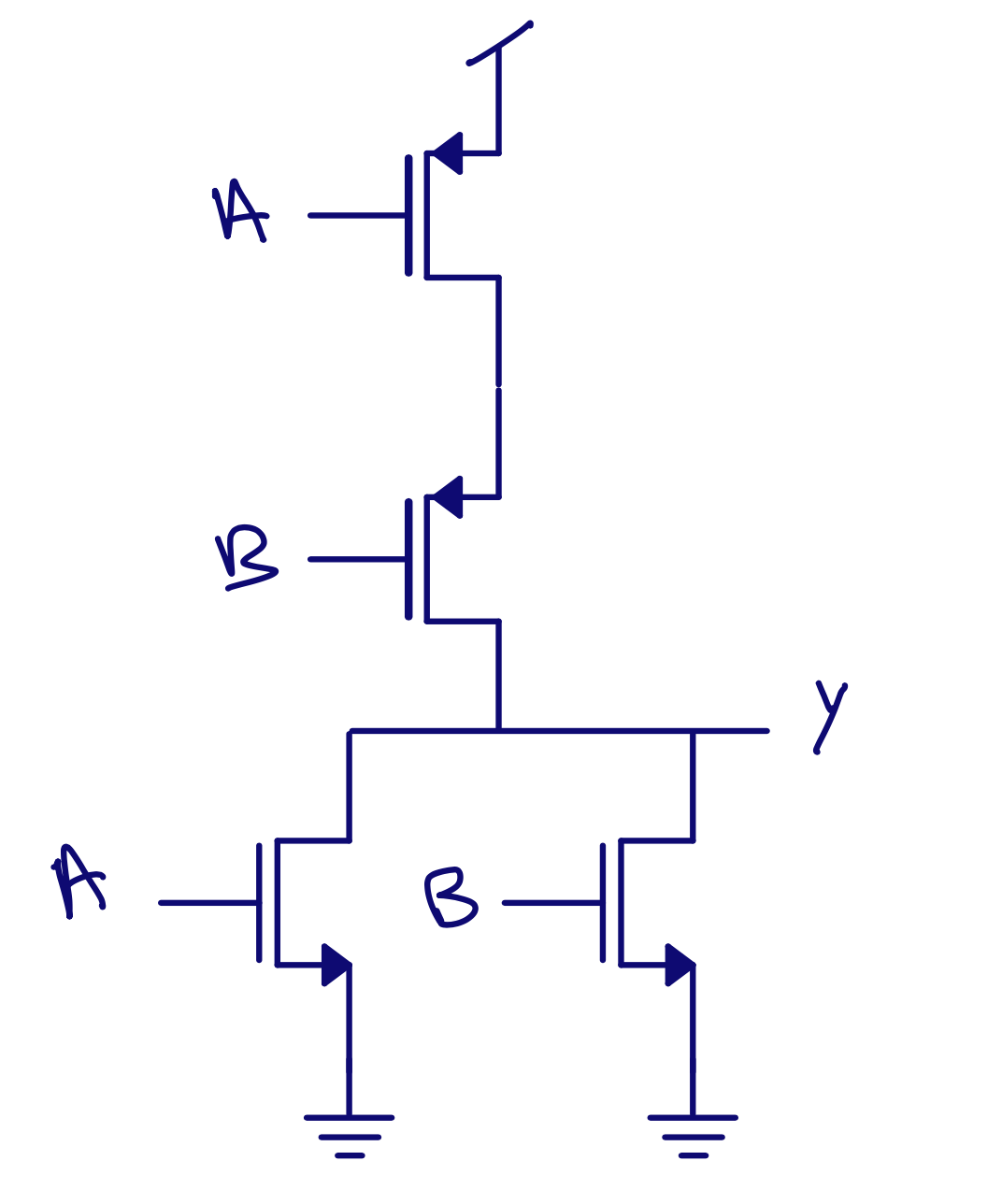
| A | B | NOT(A OR B) |
|---|---|---|
| 0 | 0 | 1 |
| 0 | 1 | 0 |
| 1 | 0 | 0 |
| 1 | 1 | 0 |



\(SR\)-Latch
Use boolean expressions to figure out how gates work.
Remember De-Morgan
\(\overline{AB} = \overline{A}+ \overline{B}\) \(\overline{A+B} = \overline{A} \cdot \overline{B}\)
\[Q = \overline{R \overline{Q}} = \overline{R} + \overline{\overline{Q}} = \overline{R} + Q\] \[\overline{Q} = \overline{S Q} = \overline{S} + \overline{Q} = \overline{S} + \overline{Q}\]\(SR\)-Latch
\(Q = \overline{R} + Q\), \(\overline{Q} =\overline{S} + \overline{Q}\)
| S | R | Q | ~Q |
|---|---|---|---|
| 0 | 0 | X | X |
| 0 | 1 | 0 | 1 |
| 1 | 0 | 1 | 0 |
| 1 | 1 | Q | ~Q |
D-Latch (16 transistors)
| C | D | Q | ~Q |
|---|---|---|---|
| 0 | X | Q | ~Q |
| 1 | 0 | 0 | 1 |
| 1 | 1 | 1 | 0 |
Digital can be synthesized in conductive peanut butter Barrie Gilbert?
Other logic cells
What about \(\text{Y} = \text{AB}\) and \(\text{Y} = \text{A} + \text{B}\)?
\(\text{Y} = \text{AB} = \overline{\overline{\text{AB}}}\)
Y = A AND B = NOT( NOT( A AND B ) )

\(\text{Y} = \text{A+B} = \overline{\overline{\text{A+B}}}\)
Y = A OR B = NOT( NOT( A OR B ) )

AOI22: and or invert
Y = NOT( A AND B OR C AND D)
\[\text{Y} = \overline{\text{AB} + \text{CD}}\]A Postraumatic Papaya was walking on the Moon. Nope, it was a NASA astronaut.
[.table-separator: #000000, stroke-width(1)] [.table: margin(8)]
Tristate inverter
| E | A | Y |
|---|---|---|
| 0 | 0 | Z |
| 0 | 1 | Z |
| 1 | 0 | 1 |
| 1 | 1 | 0 |
[.table-separator: #000000, stroke-width(1)] [.table: margin(8)]
Mux
| S | Y |
|---|---|
| 0 | NOT(P1) |
| 0 | NOT(P1) |
| 1 | NOT(P0) |
| 1 | NOT(P0) |
D-Latch (12 transistors)
D-Flip Flop (< 26 transistors)
There are other types of logic
- True single phase clock (TSPC) logic
- Pass transistor logic
- Transmission gate logic
- Differential logic
- Dynamic logic
Consider other types of logic “rule breaking”, so you should know why you need it.
Dynamic logic => A Compiled 9-bit 20-MS/s 3.5-fJ/conv.step SAR ADC in 28-nm FDSOI for Bluetooth Low Energy Receivers
Zen of electronics design 1
Beautiful is better than ugly.
Explicit is better than implicit.
Simple is better than complex.
Complex is better than complicated.
Readability counts.
Special cases aren’t special enough to break the rules.
Although practicality beats purity.
In the face of ambiguity, refuse the temptation to guess.
Now is better than never.
Although never is often better than right now.
If the implementation is hard to explain, it’s a bad idea.
If the implementation is easy to explain, it may be a good idea.
Sesame
Sesame is a Python3 package for solving the drift diffusion Poisson equations for multi-dimensional systems using finite differences.
Semiconductor current-flow equations (diffusion and degeneracy), R.Stratton, IEEE Transactions on Electron Devices https://ieeexplore.ieee.org/document/1477063
